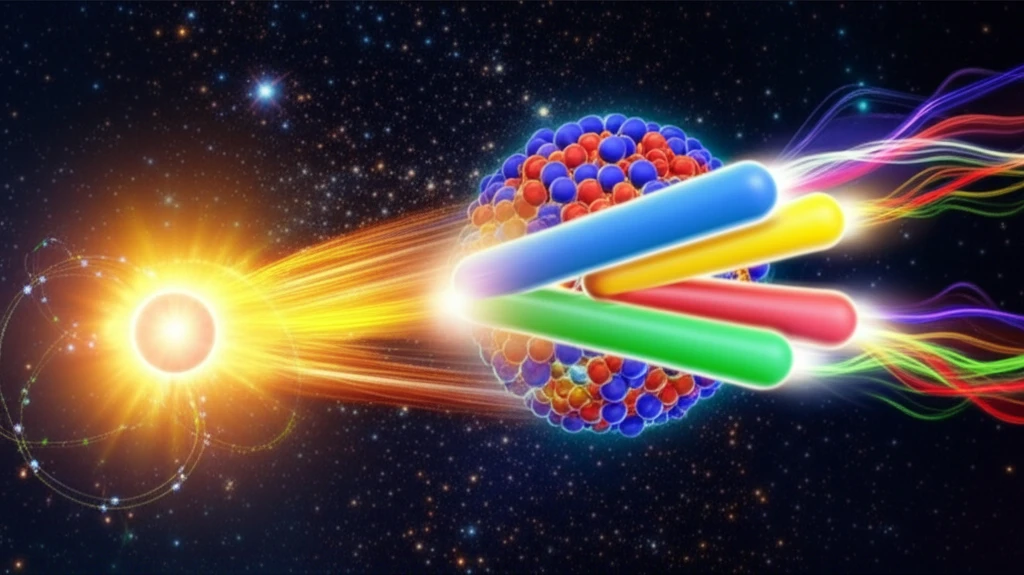
Unlocking Nuclear Secrets: How (p,d) Reactions Could Revolutionize Nuclear Physics
"New research explores using (p,d) reactions to refine our understanding of neutron capture, potentially impacting astrophysics and nuclear technology."
Neutron-capture reactions, where a neutron is absorbed by an atomic nucleus, are fundamental processes in the cosmos. They play a crucial role in the creation of heavy elements in stars and are also important in nuclear technology. However, studying these reactions, particularly with unstable isotopes (atoms with an imbalance of neutrons and protons), presents significant challenges.
Directly measuring neutron capture on unstable isotopes is often impossible due to their short lifespans and the difficulty in producing them in sufficient quantities. As a result, scientists rely on theoretical calculations to predict the likelihood of these reactions. But these calculations are only as good as the information that goes into them, and uncertainties in nuclear properties can lead to significant errors in the predictions.
To overcome these limitations, researchers are developing indirect methods to constrain these calculations. One promising technique involves studying (p,d) reactions – nuclear reactions where a proton collides with a nucleus, resulting in a deuteron (a nucleus consisting of one proton and one neutron) being emitted. By carefully analyzing these reactions, scientists hope to gain insights into the properties of the compound nucleus formed, and ultimately, to refine our understanding of neutron capture.
Deciphering Nuclear Reactions: The Power of (p,d) Reactions

The heart of this research lies in the statistical Hauser-Feshbach formalism, a theoretical framework used to describe nuclear reactions. This formalism accounts for the conservation of fundamental quantities like angular momentum and parity (a property related to the symmetry of a nucleus). In essence, it allows scientists to break down a complex nuclear reaction into a series of simpler steps, each with its own probability.
- Creating the Compound Nucleus: A proton (p) interacts with a target nucleus, resulting in the formation of a compound nucleus – the same nucleus that would be formed in a neutron capture reaction.
- Analyzing the Decay: The compound nucleus then decays, emitting particles such as neutrons or photons (gamma rays). By measuring the properties of these emitted particles, scientists can gather information about the structure and properties of the compound nucleus.
- Constraining the Calculations: The data obtained from the (p,d) reaction is then used to refine the parameters in the Hauser-Feshbach calculations, reducing the uncertainties in the predicted neutron capture cross sections.
The Future of Nuclear Physics: More Precise Models and Exotic Isotopes
By combining experimental data from (p,d) reactions with advanced theoretical models, scientists are paving the way for a more complete and accurate understanding of nuclear processes. This knowledge will not only help us unravel the mysteries of the universe but also has practical applications in nuclear technology, medicine, and energy.
